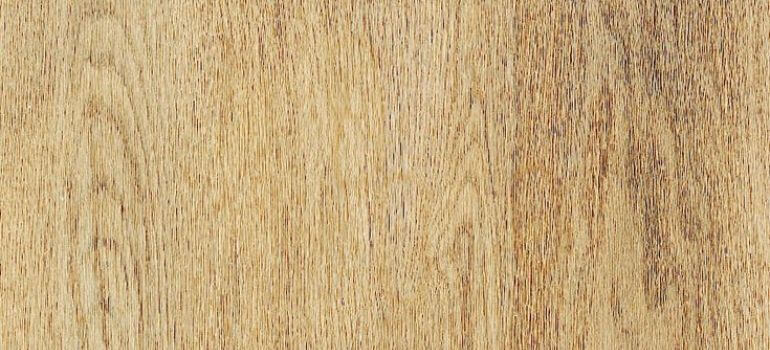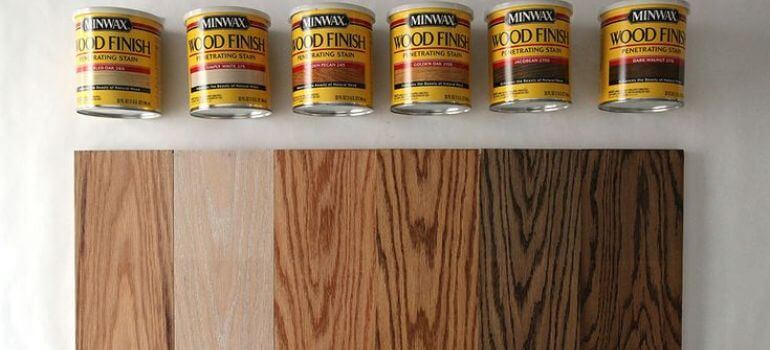Woodwork isn’t just about craftsmanship; it’s also about the aesthetic appeal that a well-chosen stain can bring to the table. When it comes to selecting the right stain for your wood projects, the choice between dark walnut and espresso stain often surfaces. In this article, we’ll delve into the characteristics, applications, and considerations of these two popular wood stains to help you make an informed decision for your next project.
Understanding Dark Walnut Stain
Dark walnut stain has long been a favorite among wood enthusiasts for its rich, deep tones. The stain is characterized by its ability to enhance the natural beauty of the wood while providing a dark and luxurious finish. Ideal for hardwoods like oak and mahogany, dark walnut stain offers a timeless appeal that suits both traditional and modern designs.
Exploring Espresso Stain
On the other hand, espresso stain boasts a distinct dark brown color reminiscent of a finely brewed cup of coffee. This stain is appreciated for its versatility, seamlessly blending with a variety of wood types. Espresso stain often brings a contemporary and sophisticated look to furniture and interior design elements.
Comparing Color Depth and Tone
When it comes to choosing a stain for your woodwork, understanding the nuances of color depth and tone is crucial. Both dark walnut and espresso stain offer distinct characteristics that can significantly impact the overall aesthetic of your project.
Analyzing the Richness and Depth of Color in Dark Walnut

Dark walnut stain is renowned for its ability to imbue wood with a warm, inviting ambiance. The color depth it imparts is characterized by a rich, reddish-brown hue, adding a touch of timeless elegance to any piece. The stain penetrates the wood, enhancing its natural grain while creating a depth that is both luxurious and classic.
In practical terms, the richness of color in dark walnut stain makes it an ideal choice for furniture pieces in traditional settings. It complements the warmth of hardwoods like oak and cherry, bringing out their inherent beauty and providing a striking contrast to lighter elements in the room.
Contrasting the Tone and Depth of Espresso Stain
On the other side of the spectrum, espresso stain introduces a cooler, dark brown tone reminiscent of a finely brewed cup of coffee. The depth of color it achieves is more understated compared to dark walnut, making it an excellent choice for those seeking a modern and sophisticated finish.
Espresso stain’s versatility shines in contemporary design schemes, seamlessly blending with a variety of wood types. From kitchen cabinets to flooring, the stain’s deep, cool tones create an air of refinement, contributing to an overall sleek and polished look.
Choosing Based on Your Aesthetic Preferences
When deciding between dark walnut and espresso stain, your aesthetic preferences play a pivotal role. If you gravitate towards a warmer, more traditional feel, dark walnut’s deep, rich color may be the perfect fit. It can infuse your woodwork with a sense of heritage and timelessness.
Conversely, if you’re drawn to modern and minimalist aesthetics, espresso stain’s cool tones can elevate your project, creating a contemporary ambiance. Consider the existing color palette of your space and how the chosen stain will interact with other elements, such as furnishings and decor.
In essence, the choice between dark walnut and espresso stain in terms of color depth and tone is a personal one. Whether you opt for the classic allure of dark walnut or the chic sophistication of espresso, both stains have the power to transform your woodwork into a statement piece that reflects your unique style.
Considerations for Different Wood Types
The type of wood you’re working with plays a crucial role in determining the ideal stain. Dark walnut stain is particularly complementary to woods like cherry and teak, where its dark tones accentuate the natural grain. On the other hand, espresso stain adapts well to a broader range of woods, including pine and birch, offering a consistent and refined finish.
Application Techniques and Results
Achieving the perfect finish with dark walnut stain involves precision and careful application. Brushing or wiping the stain onto the wood allows for better control over the depth of color. Espresso stain, with its forgiving nature, is more forgiving in terms of application techniques, making it suitable for both beginners and seasoned DIY enthusiasts.
Durability and Longevity
When embarking on a wood finishing project, considering the durability and longevity of the chosen stain is paramount. The ability of the stain to withstand the test of time and environmental factors not only ensures the aesthetic appeal but also the longevity of your craftsmanship.
Dark Walnut Stain: A Testament to Durability
Dark walnut stain is celebrated for its inherent durability. Once applied, it forms a protective layer on the wood surface, shielding it from daily wear and tear. This protective quality makes dark walnut stain an excellent choice for high-traffic areas and pieces that are subject to frequent use.
Moreover, the durability of dark walnut stain extends to its resistance against moisture and various environmental conditions. This makes it suitable for both interior and, to some extent, exterior applications. Furniture pieces treated with dark walnut stain often retain their beauty and structural integrity even in challenging environments.
Espresso Stain: Balancing Elegance with Endurance
Espresso stain, while offering elegance and sophistication, also provides a level of durability. Similar to dark walnut, it creates a protective coating on the wood, safeguarding it from scratches, spills, and other potential damages. This makes espresso stain an attractive option for furniture and fixtures that are regularly used.
While espresso stain can hold its own in terms of durability, it’s essential to note that regular maintenance might be required, especially in high-traffic areas. Occasional touch-ups can ensure the stain maintains its original luster and continues to enhance the aesthetic appeal of your woodwork.
Choosing the Right Stain for Your Project
When deciding between dark walnut and espresso stain with durability in mind, it’s crucial to assess the specific needs of your project. If you’re working on items that will be heavily used or exposed to the elements, the robust durability of dark walnut stain may be advantageous.
On the other hand, if you’re aiming for a more delicate touch and are willing to perform periodic maintenance, espresso stain can still provide an enduring finish with its own unique charm.
Ultimately, the choice between these two stains in terms of durability and longevity should align with the practical requirements of your project. Whether you prioritize the long-lasting protection of dark walnut or the balance of elegance and endurance offered by espresso, both stains contribute to the lasting beauty of your woodwork.
Popular Trends and Styles
Current design trends heavily influence the choice between dark walnut and espresso stain. Dark walnut stain aligns with the timeless and rustic aesthetics often sought after in traditional and farmhouse styles. Espresso stain, being more contemporary, complements modern and industrial design elements, contributing to a sleek and sophisticated look.
Budget Considerations
Budget constraints are a reality for many, and understanding the cost implications of your stain choice is crucial. Dark walnut stain, while luxurious in appearance, is generally more affordable than some high-end stains. Espresso stain, being cost-effective and widely available, provides an elegant finish without breaking the bank.
Customer Reviews and Experiences
Real experiences and feedback from other wood enthusiasts can be invaluable when making your decision. Dark walnut stain enthusiasts often praise its ability to add warmth and character to any project. Espresso stain users appreciate its adaptability and how it effortlessly elevates the overall aesthetic of their woodwork.
Environmental Impact
In an era where environmental considerations play a pivotal role in decision-making, evaluating the impact of wood stains on the ecosystem is crucial. Both dark walnut and espresso stains come with their own set of environmental factors, and understanding them can guide you toward a more sustainable choice for your wood finishing project.
Dark Walnut Stain: Embracing Natural Origins
One of the environmentally friendly aspects of dark walnut stain lies in its natural origins. Derived from walnut trees, the stain often utilizes the byproducts of the wood industry, contributing to a sustainable and eco-conscious approach. This aligns well with the growing preference for materials sourced from renewable resources.
Additionally, dark walnut stain tends to have a lower Volatile Organic Compounds (VOC) content compared to some synthetic stains. This means fewer potentially harmful emissions during application, promoting indoor air quality and minimizing the environmental impact associated with volatile chemicals.
Espresso Stain: Navigating Synthetic Terrain
Espresso stain, being a synthetic product, raises different considerations when it comes to its environmental impact. While some variations of espresso stain may contain higher levels of VOCs, advancements in stain formulations have led to low VOC options, mitigating potential harm to the environment.
It’s essential to check product labels and opt for eco-friendly versions of espresso stain if sustainability is a primary concern. Some manufacturers have responded to the demand for greener options, offering stains with reduced environmental footprints without compromising on performance.
Making an Informed Choice
When choosing between dark walnut and espresso stains with environmental impact in mind, it boils down to personal values and priorities. If you lean towards a stain with natural origins and a potentially lower environmental footprint, dark walnut stain aligns with eco-conscious practices.
On the other hand, if you appreciate the versatility of espresso stain but want to minimize synthetic contributions, selecting low VOC formulations can strike a balance between aesthetics and environmental responsibility.
Ultimately, by opting for stains with reduced environmental impact, you contribute to the broader movement towards sustainable practices in the woodworking industry. Whether it’s the natural elegance of dark walnut or the synthetic sophistication of espresso, making an informed choice empowers you to create beautiful woodwork with a mindful approach to the planet.
DIY Tips and Tricks
For those inclined towards a hands-on approach, knowing the ins and outs of DIY application is essential. Dark walnut stain benefits from meticulous application, ensuring an even and consistent finish. Espresso stain, being forgiving, allows for experimentation and creativity, making it a favorite among DIY enthusiasts.
Maintenance and Care
Maintaining the beauty of your woodwork is an ongoing process. Dark walnut stain requires periodic reapplication in high-traffic areas to maintain its luster. Espresso stain, while also needing occasional touch-ups, generally requires less maintenance due to its forgiving nature.
Real-Life Examples and Comparisons
To help you visualize the potential outcomes, we’ve gathered real-life examples showcasing the transformative power of both dark walnut and espresso stain. From elegant dark walnut dining tables to sleek espresso-stained kitchen cabinets, these comparisons aim to inspire and guide your decision-making process.
Conclusion
In the dark walnut vs espresso stain debate, there’s no one-size-fits-all answer. Your choice ultimately depends on your preferences, the type of wood you’re working with, and the overall aesthetic you want to achieve. Whether you opt for the timeless warmth of dark walnut or the contemporary sophistication of espresso stain, both choices promise to elevate your woodwork to new heights.
Frequently Asked Questions
Dark walnut stain can be applied to lighter woods, but it’s essential to test a small area first to ensure the desired result.
Espresso stain is generally suitable for outdoor use, but regular maintenance may be required to preserve the finish.
Consider wood type, design style, budget, and maintenance preferences when deciding between dark walnut and espresso stain.
Dark walnut stain is often considered more eco-friendly due to its natural sources, while low VOC espresso stain options minimize environmental impact.
Mixing stains is possible, but it’s advisable to conduct small tests to ensure the desired color is achieved before applying to larger surfaces.



